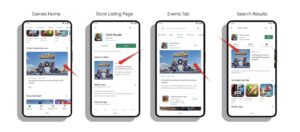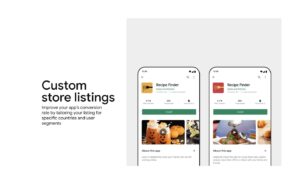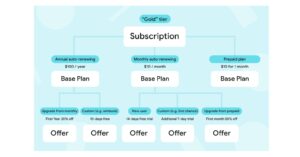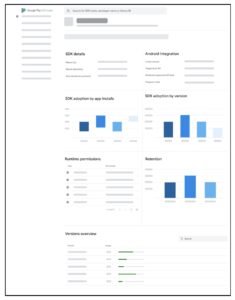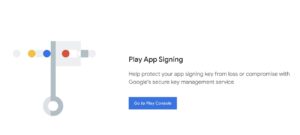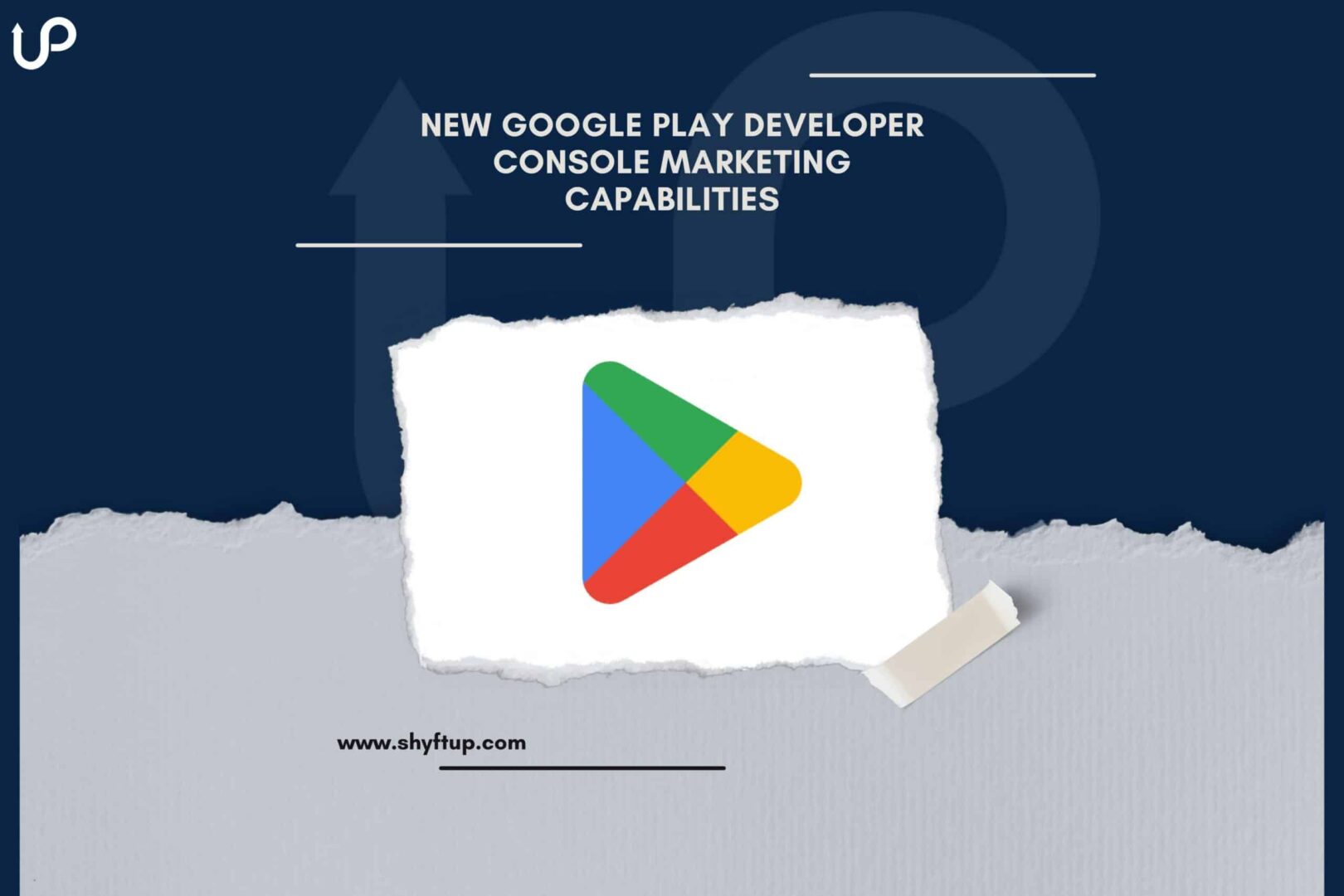
Google Play is no doubt the largest app store today. With more than 80 billion app downloads annually and 3 million apps available, it should not come as a surprise if it will constantly improve its system.
In 2021, Apple seemed to dramatically shift the balance to their advantage when they introduced the iOS 15. Now, Google Play might have taken back the crown and established its throne as the king of app stores with the latest updates.
This year, Google Play added powerful, state-of-the-art features that help app developers and marketers gain new users, measure app performance, and improve overall marketing efforts.
What are these new updates and capabilities? That’s what we are going to talk about right now.
If you want to better understand what is in store for you as an app developer, here are the new Google play developer console marketing capabilities you must know.
LiveOps Beta
LiveOps is Google’s response to Apple’s In-App Events. This is one huge step for Google to further help app developers reach more users, improve engagement, and most importantly, monetize their apps.
What are LiveOps cards?
With LiveOps comes LiveOps cards, which are automatic marketing units that appear in various places in the Play Store. These cards can be used to promote in limited time the following:
- Events – these are events that are time-limited and non-offer. You can promote events that are happening within your app. You can even announce games such as:
- Environment vs. player events
- Player vs player events
- Challenges
- Tournaments
- alliance/co-op events
- Major updates – every once in a while, you may release new updates that affect how your app works. You can use the LiveOps cards to announce these updates, which may include but are not limited to the following:
- New gameplay features
- New in-app products
- New content drops
- Offers – these offers may include any discounts, rewards, and value-add bonuses in your app.
- Pre-registration announcements – utilize LiveOps to gather users who want to pre-register to your app. Keep them informed about what is coming and what they can expect. With LiveOps, you can share announcements about the following:
- New content
- Milestone rewards progress
- App demos
- Global release
- Cross-over – this is specially used for games. It allows you to promote your offers between games and IP.
How would LiveOps cards appear on the Play Store?
Image source: Google Play
The image above shows you how LiveOps would appear on Google Play. How it is displayed would depend on the page a user is currently viewing. It could be different on Games Home, Store Listing Page, Events Tab, and Search Results.
It is quite interesting to note that Google Play continuously improves its algorithm to make sure that only the most relevant LiveOps card would be shown to specific users. This means that not all users would see the same cards at the same time.
How to get started with LiveOps
At the time of this writing, LiveOps is just available in the beta version. Thus, you have to choose to be part of the beta program.
You need to meet the eligibility requirements of Google in order for you to start using LiveOps.
To join LiveOps, you must comply with the following guidelines:
- Your app has a great user experience, content, and technical performance
- At least 100,000 global monthly active users
- Compliant to Google’s terms, conditions, and policies. This is evaluated every four weeks.
- Has a huge user appeal
If you wish to join, you can express interest and be part of the LiveOps Beta.
Custom Store Listing
With the recent custom store listing, you can’t just create 25, 35, or 45 custom store listings, but up to 50 of them!
Now, that’s something that every app developer would be happy about.
Image source: Android Developer
What’s so special about custom store listings? Here are some of them:
- They come with unique URLs, which you can use to send out to your users.
- You can personalize and customize specific custom store listings based on your target audience.
- Showcase one feature of your app at a time.
- Design your messaging based on your user’s country, culture, and group.
- Show the right custom store listing depending on which site or channel your user came from.
- Discover how each custom listing performs with its individualized analytics. You can efficiently analyze the performance of listings and see how they impact revenue.
You may also want to note that Google’s custom store listings come with more benefits compared to Apple’s Custom Product Pages. The reason is that Google comes with a much greater ad network compared to Apple Search Ads. In fact, you can easily integrate custom store listings into Google Ads.
With all these in mind combined, with 50 possible custom store listings, you can just imagine the huge marketing potential of this new update!
New powerful tools for user acquisition
There’s no doubt that more and more apps today use the subscription as their business model. Previously, this is one area of the Google Play Store that hasn’t seen an upgrade for the last few years.
Finally, in the latest development, Google made it easier for app developers to change how their subscription works with ease, less complexity, and more flexibility.
So, how does this exactly work? Here’s how:
In the past, whenever you wanted to promote special offers, you would need to create a new stock-keep unit or SKU. So, you create SKUs for discounted prices, service tier upgrades, and strategy customization. What’s more difficult about this is that you would also need to update your app every time you create SKUs.
Thankfully, this all changed. The new update eliminates the need to create additional SKUs for every offer you make. You can create multiple base plans and then, create offers for each plan.
Without the need to create too many SKUs, you can better focus on supporting existing customers, acquiring new subscribers, rewarding users who went for upgrades, and so much more.
Here’s an example of how subscription-based business models work with the new updates:
Source: Android Developers
Another change that you may do now is to offer prepaid plans. This is ideal for customers who are not yet ready to commit to a higher plan level. The prepaid plans even make it easier for users to extend or upgrade their plans without even leaving the Play Store subscription screen.
Updated Google Play Store listing experiments
A lot of app marketers were happy when Google Play Store listing experiments were first introduced. After all, it allows you to do A/B tests without actually leaving the Google Play console.
Since it is done within the console, a lot of people initially thought that it gives you accurate results. However, that’s not always the case.
Before the update, experiments would analyze your data by simply taking into consideration how many people saw your app and how many of them installed your app.
Now, there’s a huge problem with that. You see, you can have a lot of impressions but only a few would download your app. Your conversion rate would definitely go down, but this data didn’t take into consideration the number of impressions. After all, having more people see your app also indicates growth in your marketing.
The reverse can also be true. You can have only a few people see your app and a lot of them install it. You can have a huge conversion rate, but in reality, only a few people used your app.
That’s the problem that the new update tried to solve. Because of these, Google added some parameters for you to set when trying to initiate an experiment. These are the following:
- Minimum detectable effect (MDE) – this determines the minimum threshold needed for your experiment to reach to declare a winner.
- Confidence level – the higher the percentage level of confidence, the higher the chance that you get an accurate result.
- Experiment goal – you simply need to choose between “Retained first-time installers” (which is recommended) and First-time installers.
When setting up the experiment, you’ll get a quick estimate of how long your test will run based on your traffic volume and how many samples you need basing on the test configuration.
The new features of Google experiments could mean the following for app marketers:
- The new addition gives you more control over how you want to run your experiments.
- You get more accurate data, which is something businesses would appreciate especially those who don’t have expert statisticians and data scientists on their team.
Improved privacy and security level
What we have discussed so far are the new Google Play features that directly affect marketing. Now, let’s talk about privacy and security initiatives that aim to protect not just users, but also app developers.
Google Play SDK Index
SDK means Software Development Kit, which refers to the collection of code libraries. These libraries contain a list of various third-party products and services, which enable and support important functions of apps.
Way back in 2020, Google launched the Google Play SDK console. Through this console, SDK providers can quickly get in touch with app developers within the console itself and even in the Android Studio.
The SDK console provides a wide range of data, which includes:
- Crash reporting
- Usage statistics
In 2022, Google Play SDK Index was added to the Google Play SDK console. This index lists more than 100 SDKs. This is an important upgrade because it allows app developers to simply just look at the list of SDKs and quickly find the right SDK that they can use in the Google Play Console.
Through the SDK index, you’ll quickly get an idea of which of the SDKs are the most popular, what data they offer, and how app developers are using them.
As you can imagine, it can be difficult to choose which SDK to use without the SDK index. Google allows you to make a better and wiser decision by gathering relevant and crucial information about SDK.
Here’s what the SDK index looks like in the Google Play SDK console:
Image source: Android Developers
Play App Signing
Play App Signing is the process of securely adding millions of apps to Google Play. Google wants to make sure that every app on Play Store and the updates that come with it would be secure and trusted.
The latest update integrates Play App Signing to Google Cloud Key Management. This move aims to further improve the security of Google Play.
In its simplest sense, Google Cloud Key Management Service (KMS) manages the encryption keys used in Google cloud services. People use KMS to also implement cryptographic functions.
Since Pay App Signing is integrated with KMS, app developers can now check the security practices of Google and the storage specifications.
From now on, every new key generated for apps would be included in the Cloud Key Management. For existing keys, they would all eventually be added to the new management tool.
Another change in Play App Signing is the app signing key rotation. This allows Google Play Console to do an annual key rotation to optimize security and access.
Play Integrity API
The Play Integrity API protects your games and apps against potentially fraudulent and risky interactions. It can determine whether you’re interacting with a genuine installed app, app binary, and Android device.
Source: Developer Android
This is especially important to significantly reduce the chance of cheating, fraud, and unauthorized access to the app.
Data safety section
Google now adds a section on your Google Play Store listing called “Data safety.” If you haven’t done so yet, please add details about how you safeguard, use, and manage users’ data gathered in the app.
It’s a great way for you to showcase how you put great importance on security and privacy. If done correctly, you can convince more people to use your app as they would be more confident in using your app.
Privacy Sandbox
The Privacy Sandbox aims to help users keep their data as private and secure as possible, but at the same time, enable businesses and developers to maximize their earning potential.
With Privacy Sandbox, you’ll get access to the following:
- Privacy Sandbox APIs
- SDK Runtime and Topics API developer guides
- Device system images
- Sample codes for runtime-enabled SDK implementation
New Features to improve app quality
Google recognizes the importance of supporting the quality of your app. They want you to have the necessary tools within the Play Console, which are necessary to further improve your app.
That’s why, in the latest updates made by Google, they have also made some changes so your app can thrive.
Here are some of them:
- Android vitals, which give you the technical quality metrics of your app, can now be accessed outside of the Play Console. You can do this with the use of the Developer Reporting API. Android vitals would include data such as ANR and crash rates, clusters, counts, and stack traces. With the API, you can integrate these data into your existing tools.
- Android vitals can now be set by the country, which allows you to analyze data based on your audience’s location.
- Android vitals can now easily work with Firebase Crashlytics.
- Reach and devices are improved so that it would also include not just user and issue distribution insights, but also revenue metrics.
- The Device catalog has been revamped. With the new Overview page of the Device catalog, you can quickly see install data and filter them based on various device attributes.
- The In-app Updates API automatically alerts your users whenever you add new updates, which can be sent as quickly as 15 minutes.
Learn more about Google Play Developer Console
Exciting new features await app developers, marketers, and businesses. With Google’s constant quest for improvement, you can always expect that the tech giant would continually release more updates in the future.
To stay on top of your game, you need to have the right tools and expert help. That’s why you can always count on ShyftUp to improve your app’s performance.
ShyftUp is an experienced user acquisition agency that will assist you in growing your app’s reach, visibility, and installs. They have helped thousands of clients reach their business goals. You can be one of them. Get in touch with them to schedule your demo today!
Is Google Developers Console free?
No, it’s not. At the time of this writing, you would need to pay 25USD as a one-time registration fee to signup and use the platform.
Can I have multiple Google Play developers?
The answer is yes. You can create different developer accounts using different Gmail accounts.
What can I do with Google Play Console?
Google Play Console is like a virtual office for your app. You can create, publish, and manage your games and apps on the console. You can also track and evaluate app performance in Google Play Console.

